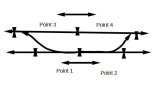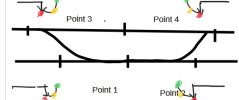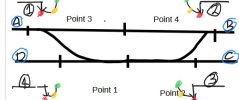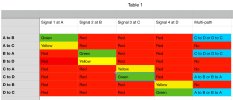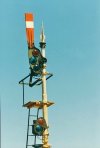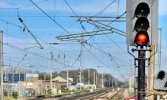GAP
G Scale Model Trains, 1:1 Sugar Cane Trains
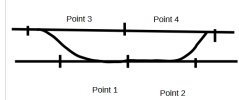
I have this rail line configuration on my layout and want to add semaphore signalling for when the points are changed and the crossover is active.
Do I use one arm with it parallel with the ground for straight through and at 45 degrees when crossover is active or do I need another position of the arm for straight through maybe up 45 degrees with parallel as stop.
Apologies for lack of terminology knowledge.


